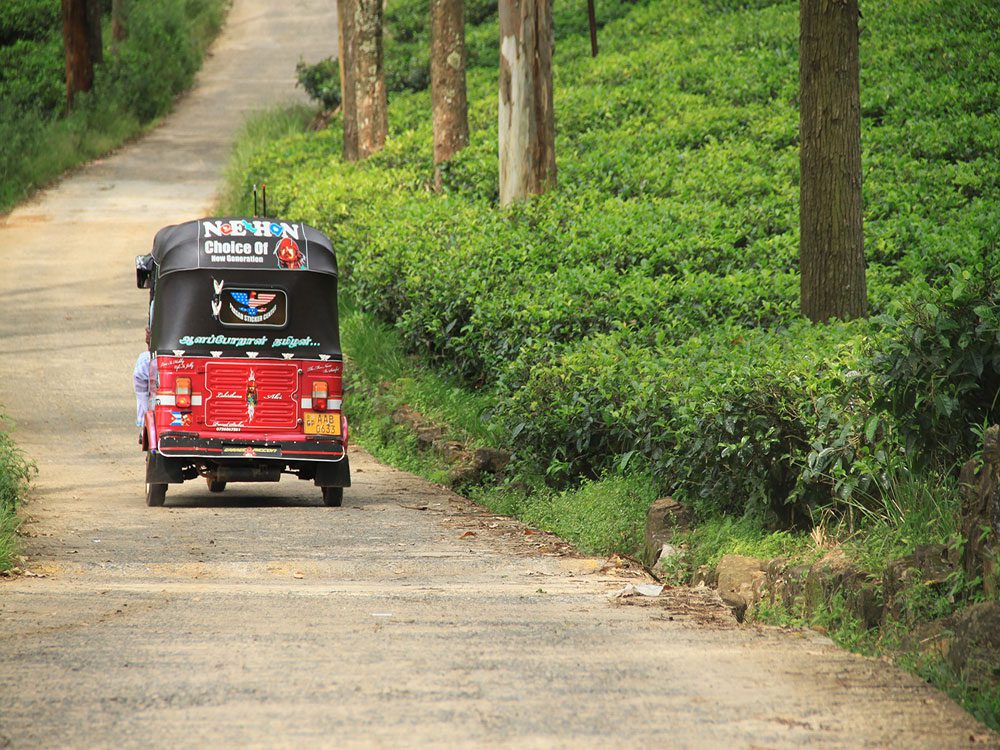A FEW THINGS ABOUT HISTORY
In 1867 the Scottish coffee grower James Taylor, the man who would later be recognized as the pioneer in the tea industry in Sri Lanka, planted 19 acres of tea near Kandy at an altitude of about 500 meters.
In the 1860s, however, Sri Lanka was the largest coffee producer in the world and few paid attention to Taylor. Two years later, the fungus Hemileia vastatrix appeared on the island … and led, within 10 years, the British coffee growers to an economic catastrophe.
Soon, tea cultivation spread to various parts of the island. Due to the climatic conditions prevailing in Sri Lanka, the plant gives different flavors, while the varieties used are enriched. In general, Ceylon tea is characterized by the altitude at which it is grown. Humidity and heat help the plant to grow, while the best varieties are those that grow at an altitude of over 2100 feet. The main production areas are in the center of the island, around the district of Kandy.

TODAY
Sri Lanka (formerly Ceylon) is the fourth largest producer of tea in the world with production being one of the main sources of foreign currency exchange representing 2% of GDP and thus contributing to its economy. In fact, the largest production of 340 million kilos was recorded in 2013!
The humidity, cold temperatures and rainfall of the central mountainous areas of the country provide a climate conducive to the production of high quality tea. On the other hand, tea produced in low altitude areas such as Matara, Galle and Ratnapura with a lot of rainfalls and hot temperatures, have a high level of styptic properties.
CEYLON TEA
Depending on where the plants grow, the taste is different. That is why tea in Sri Lanka is so special. Ceylon tea, which has been popular since the 19th century, is the basic choice of tea for most tea makers around the world.
BASIC TYPES
There are 3 varieties produced from the Camellia Sinensis plant in Sri Lanka. They all come from the same plant species, but it is the soil and the weather that give each plant a different flavor. There are five areas in Sri Lanka where tea is produced, each at a different altitude. Starting from the sea level and reaching 2000 meters high.



BLACK TEA
To make black tea, the leaves are hand-picked by female workers. They collect two leaves only and the buds in large quantities, which are then withered, wrapped and kneaded, and later dried and sieved. After sieving, the leaves are separated to different degrees. The largest leaves are called Orange Pekoe.
GREEN TEA
Ceylon green tea is rapidly gaining popularity outside of Sri Lanka. The process of making green tea is different from black tea, even though it comes from the same plant. The leaves have not been kneaded, thus retaining their antioxidant properties. The leaves are collected, stacked and heated and then wrapped before drying and sieving. Ceylon green tea is pure and clear, as the black tea.


WHITE TEA
White tea is the most special. It is also the most expensive because of the way it is harvested. Only buds are required for white tea. They are not kneaded at all and are wrapped by hand one by one. White tea is the only one that is completely handmade. There is less caffeine and more antioxidants than in green or black tea, making white tea one of the healthiest tea types.
MLESNΑ TEA
Mlesna is based in Sri Lanka and has been active in the industry of quality tea for over 30 years. Based in Colombo, the capital of Sri Lanka, the company is located near the areas of the island where the famous Ceylon tea is produced.
Mlesna founder Anselm Perera boasts 40 years of experience in tea tasting and his company is the first to pack tea in a tea bag and gift box on the island.
Mlesna now is active in over 40 countries and offers over 2500 products.
A trip to Sri Lanka is never complete without visiting a tea factory and tasting tea.

